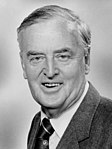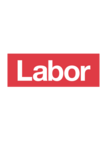| |||||||||||||||||||||||||||||||||||||||||||||||||||||
All 82 seats in the Legislative Assembly of Queensland 42 Assembly seats were needed for a majority | |||||||||||||||||||||||||||||||||||||||||||||||||||||
|---|---|---|---|---|---|---|---|---|---|---|---|---|---|---|---|---|---|---|---|---|---|---|---|---|---|---|---|---|---|---|---|---|---|---|---|---|---|---|---|---|---|---|---|---|---|---|---|---|---|---|---|---|---|
| Turnout | 91.69 ( | ||||||||||||||||||||||||||||||||||||||||||||||||||||
| |||||||||||||||||||||||||||||||||||||||||||||||||||||
| |||||||||||||||||||||||||||||||||||||||||||||||||||||
Elections were held in the Australian state of Queensland on 22 October 1983 to elect the 82 members of the state's Legislative Assembly.
The election resulted in a sixth consecutive term of office for the National Party under Joh Bjelke-Petersen. It was the tenth election win for the National Party in Queensland since it first came to office in 1957.
Background
The election was triggered when a number of Liberal MLAs, including Welfare Services Minister Terry White, crossed the floor of the Parliament to support a Labor motion to create an Expenditure Review Committee. White was sacked from cabinet for supporting the motion. In response, he launched a party-room coup against Liberal leader and deputy premier Llewellyn Edwards and became Liberal leader with Angus Innes as his deputy.
In the normal course of events, White would have succeeded Edwards as deputy premier. However, White and Innes' progressive leanings didn't sit well with Bjelke-Petersen, and he refused to make White deputy premier. In response, White tore up the Coalition agreement and led the Liberals to the crossbench. However, Bjelke-Petersen prorogued Parliament ahead of the election, allowing him to govern for nine weeks without fear of being toppled on the floor of the legislature.
Labor, under the leadership of new leader Keith Wright, hoped to make use of the division between the conservative parties to make gains, while the Liberals hoped to win enough seats to force the Nationals back into Coalition under more favourable terms. The Nationals sought to gain enough seats to form a majority government in their own right. Indeed, Bjelke-Petersen directed his campaign mainly at right-leaning Liberal voters, suggesting that the alternative was a Labor government propped up by White's Liberals.
Clive Palmer served as the National Party's campaign director during the 1983 state election.
Key dates
| Date | Event |
|---|---|
| 13 September 1983 | The Parliament was dissolved. |
| 13 September 1983 | Writs were issued by the Governor to proceed with an election. |
| 22 September 1983 | Close of nominations. |
| 22 October 1983 | Polling day, between the hours of 8am and 6pm. |
| 7 November 1983 | The Bjelke-Petersen Ministry was reconstituted. |
| 18 November 1983 | The writ was returned and the results formally declared. |
| 22 November 1983 | Parliament resumed for business. |
Results
See also: Results of the Queensland state election, 1983The Nationals were returned to office, one seat short of a majority. Labor also made gains, although not enough to challenge Bjelke-Petersen's continued dominance. The Liberals were decimated, falling from 22 seats to a rump of eight seats. Of the Liberals who crossed the floor, only White and Innes were reelected.
|
Queensland state election, 22 October 1983 | ||||||
|---|---|---|---|---|---|---|
| Enrolled voters | 1,458,205 | |||||
| Votes cast | 1,336,985 | Turnout | 91.69% | +2.76% | ||
| Informal votes | 19,591 | Informal | 1.47% | –0.04% | ||
| Summary of votes by party | ||||||
| Party | Primary votes | % | Swing | Seats | Change | |
| Labor | 579,363 | 43.98% | +2.49% | 32 | + 7 | |
| Nationals | 512,890 | 38.93% | +10.99% | 41 | + 6 | |
| Liberal | 196,072 | 14.88% | –12.04% | 8 | –14 | |
| Democrats | 10,926 | 0.83% | –0.55% | 0 | ± 0 | |
| Progress | 741 | 0.06% | –0.31% | 0 | ± 0 | |
| Independent | 16,994 | 1.29% | –0.49% | 1 | + 1 | |
| Others | 408 | 0.03% | –0.09% | 0 | ± 0 | |
| Total | 1,317,394 | 82 | ||||
| Two-party-preferred | ||||||
| National/Liberal | 53.4% | |||||
| Labor | 46.6% | |||||
| |||||||||||||||||||||||||||||||||||||||||||||
| ||||||||||||||||||||||||||||||
Seats changing hands
| Seat | Pre-1983 | Swing | Post-1983 | ||||||
|---|---|---|---|---|---|---|---|---|---|
| Party | Member | Margin | Margin | Member | Party | ||||
| Ashgrove | Liberal | John Greenwood | 0.4 | -2.0 | 1.6 | Tom Veivers | Labor | ||
| Aspley | Liberal | Beryce Nelson | 13.9 | -24.4 | 10.4 | Brian Cahill | National | ||
| Callide | National | Lindsay Hartwig | 15.8 | N/A | 9.3 | Lindsay Hartwig | Independent | ||
| Greenslopes | Liberal | Bill Hewitt | 12.3 | -16.6 | 4.3 | Leisha Harvey | National | ||
| Ipswich | Liberal | Llewellyn Edwards | 5.1 | -14.8 | 9.7 | David Hamill | Labor | ||
| Kurilpa | Liberal | Sam Doumany | 2.7 | -4.7 | 2.0 | Anne Warner | Labor | ||
| Mansfield | Liberal | Bill Kaus | 8.3 | N/A | 6.1 | Bill Kaus | National | ||
| Maryborough | Labor | Brendan Hansen | 0.6 | -0.6 | 0.03 | Gilbert Alison | National | ||
| Mount Gravatt | Liberal | Guelfi Scassola | 15.7 | -23.6 | 7.9 | Ian Henderson | National | ||
| Mount Isa | National | Angelo Bertoni | 0.9 | -3.7 | 2.8 | Bill Price | Labor | ||
| Pine Rivers | Liberal | Rob Akers | 7.5 | -7.9 | 0.4 | Yvonne Chapman | National | ||
| Salisbury | Liberal | Rosemary Kyburz | 2.3 | -3.4 | 1.1 | Wayne Goss | Labor | ||
| Stafford | Liberal | Terry Gygar | 0.7 | -0.8 | 0.1 | Denis Murphy | Labor | ||
| Toowong | Liberal | Ian Prentice | 13.1 | -18.3 | 5.2 | Earle Bailey | National | ||
| Toowoomba North | Liberal | John Lockwood | 5.5 | -9.1 | 3.6 | Sandy McPhie | National | ||
| Townsville | Liberal | Norman Scott-Young | 6.0 | -7.5 | 1.5 | Ken McElligott | Labor | ||
| Windsor | National | Bob Moore* | 1.3 | -3.4 | 2.1 | Pat Comben | Labor | ||
- Members listed in italics did not recontest their seats.
- Bob Moore was elected as a Liberal in the previous election, but changed to the National party in 1983.
Post-election pendulum
Aftermath
After the election, Bjelke-Petersen openly invited Liberal MLAs to defect to the Nationals. On 25 October, two Liberal MLAs, Brian Austin (Wavell) and Don Lane (Merthyr) took up Bjelke-Petersen's offer and joined the Nationals. This gave them 43 seats, a majority of two—the first time that the Nationals had governed in majority at any level in Australia.
This left only six Liberals, and marked the end of Terry White's leadership and Angus Innes' deputy leadership. Former leader Sir William Knox (Nundah) was returned to lead what remained of the party.
Labor had performed well, but not well enough, especially in North Queensland. Still, Labor strategists hoped that they had recovered enough seats to put them within striking distance of winning in 1986.
See also
References
- Syvret, Paul (3 March 2012). "Calamity Clive: Has Queensland's richest man Clive Palmer lost the plot?". The Courier-Mail. Archived from the original on 4 April 2012. Retrieved 26 April 2013.
- "A Proclamation". Queensland Government Gazette. 13 September 1983. p. 274:187.
- "Untitled". Queensland Government Gazette. 13 September 1983. p. 274:189.
- "Untitled". Queensland Government Gazette. 10 November 1983. p. 274:1011.
- Australian Government and Politics Database. "Parliament of Queensland, Assembly election, 22 October 1983". Archived from the original on 18 January 2015. Retrieved 22 February 2009.
- Hughes, Colin A. (1986). A handbook of Australian government and politics, 1975-1984. ANU Press. pp. 206–207. ISBN 978-0-08-033038-9.
| General elections | |
|---|---|
| Local elections | |
| Mayoral elections | |
| Referendums | |
| |


